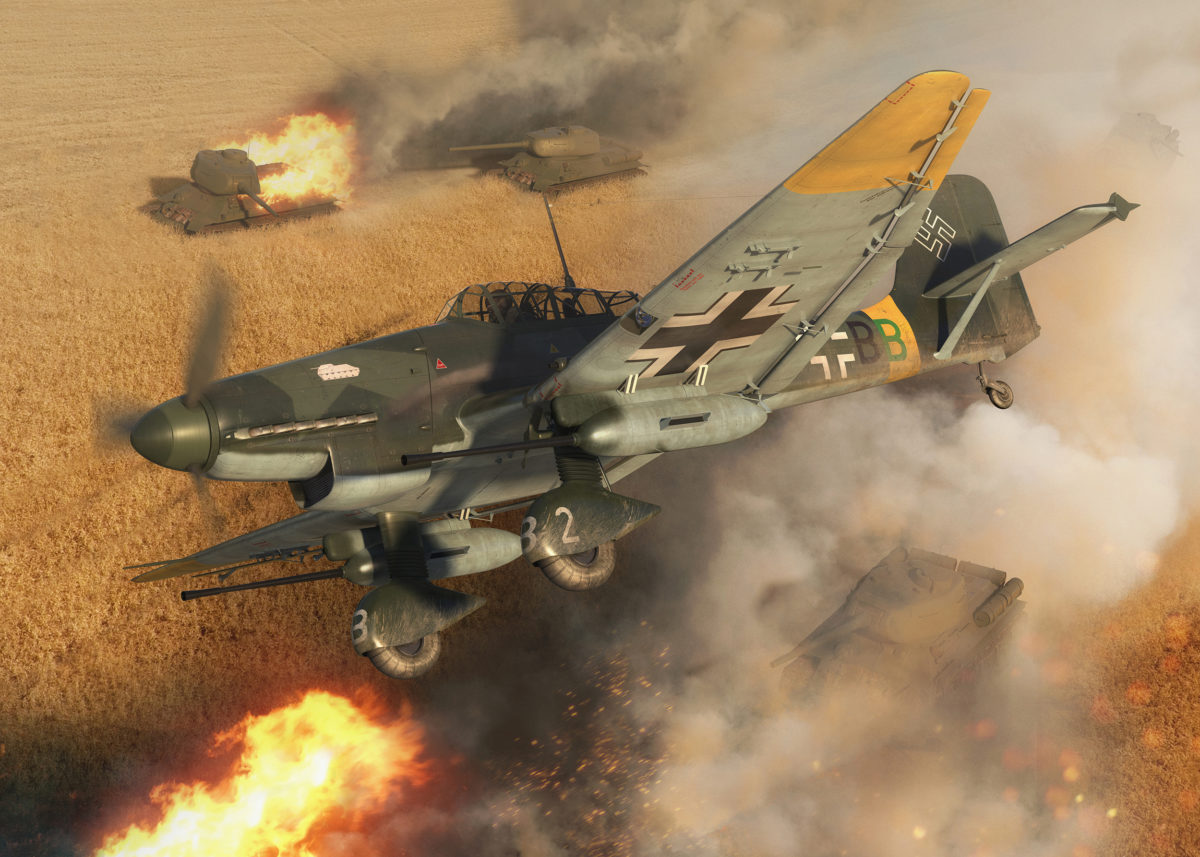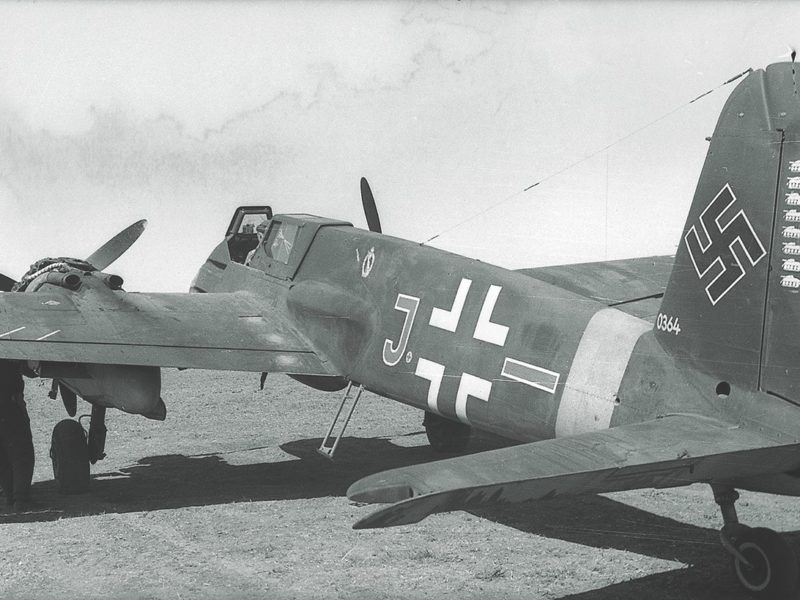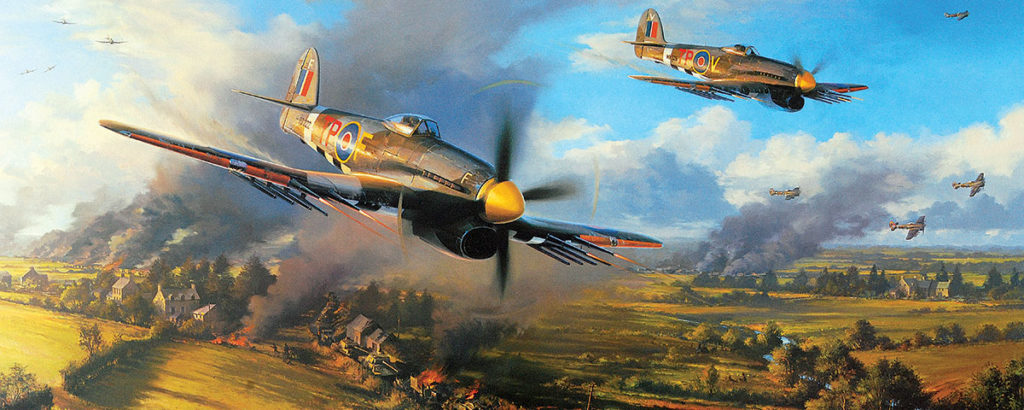Recommended for you
The German pilots in their Messerschmitt Me-109s and Focke-Wulf Fw-190s had a field day against their Soviet adversaries and their inferior Yakovlev fighters. The Germans reported 367 victories that day. In terms of numbers, that made it the Luftwaffe’s greatest day of air combat in the entire war. Yet despite this initial success, the seeds for a German defeat at Kursk had already been sown, in the air and on the ground.
The Kursk battle is most often remembered as a gigantic tank clash, when German Tigers, Panthers and Ferdinands crashed into Soviet defensive lines that bulged westward around the Russian city. This is how Adolf Hitler viewed it. Even in February 1943, five months before the battle began, Hitler spoke of his new tanks as a “gigantic concentration of the newest offensive weapons” that would restore German superiority on the Eastern Front. Tanks alone weren’t enough, though. Without air power, the Germans lacked a vital ingredient for their projected Blitzkrieg.
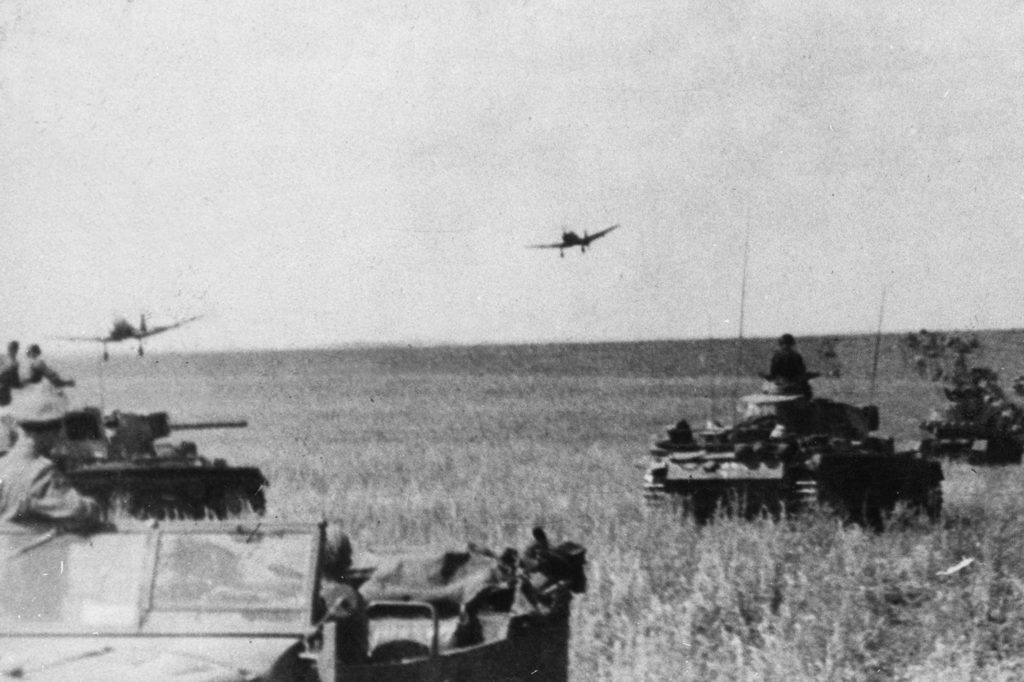
The germans had proven Air Power
The Luftwaffe had proven essential during the Third Battle of Kharkov in March 1943, a German counteroffensive that made the July attack on Kursk possible. “The enemy is again attacking us heavily with his air force,” said one Soviet report that emphasized the importance of German air power. Another noted that “the movement of enemy tanks takes place under the cover of his aircraft.” This close cooperation between the Germany Army and Luftwaffe was the linchpin of Germany’s entire war machine, and thus the key to any possibility of victory in the planned attack on the Kursk bulge, called Operation Citadel.
The problem for the Germans was that the Luftwaffe was not what it had been in the early days of the war. German aircraft, especially fighters, were no longer state of the art and the introduction of new equipment had suffered catastrophic delays. German production chiefs were beginning to panic. The planned piston-engine successor to the ubiquitous Me-109, the Me-209, had been cancelled in favor of a technological breakthrough, the Me-262 jet fighter. Yet less than a month before the attack on Kursk, production of the Me-262 had not advanced beyond the discussion phase. For the moment, Germany would have to struggle for air superiority with the Me-109 and the Fw-190, even though neither airplane could match their British and American opponents.
nazi germany was unprepared
The planning for German bombers had meanwhile lost all touch with reality. Production of the antiquated fixed-undercarriage Junkers Ju-87 Stuka, the technological opposite of the Me-262, was planned to continue at a steady rate of 150 a month until September 1945. The plans did not mention how Nazi Germany intended to survive that long. In July 1943, the only place the Stuka could fly in daylight was in the East; on other fronts it was little better than an aerial target.
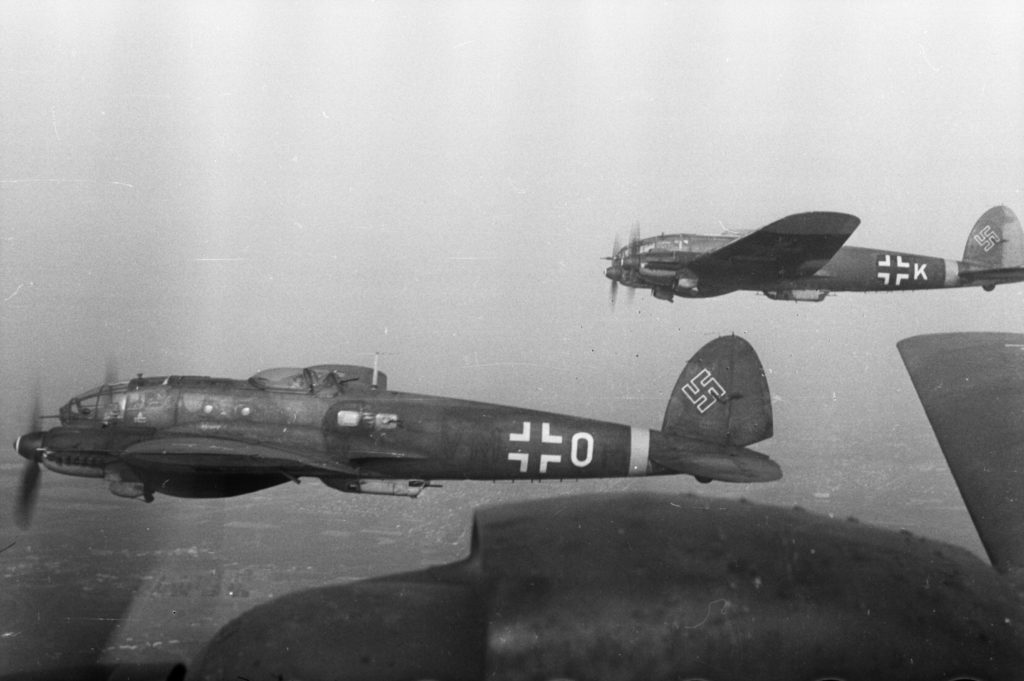
Even now, more than 75 years after the war, the true extent of Germany’s production crisis remains obscured. The full set of German monthly aircraft delivery reports from 1939 to 1943, recently discovered in a German federal archive, shows just how few advanced aircraft the Luftwaffe accepted from factories in June 1943, on the eve of battle. This included a mere six Heinkel He-177 heavy bombers, none of them combat ready. The only new type on the verge of mass production was the Messerschmitt Me-410, originally intended to replace the obsolete Me-110 in the role of bomber destroyer. In practice, all 52 of the new Messerschmitts were delivered as fast bombers, since Germany desperately needed something better than the Stuka. Crew training had not kept up either, so only a small number of Me-410s entered combat in June and these went to the Mediterranean as reconnaissance planes, in the hope that their higher performance would allow them to evade the swarms of fast Allied fighters. Any of the “newest offensive weapons” the struggling German aircraft industry produced went to fight Britain and America. The forces at Kursk would have to make do with what they had.
The effect of the production debacle was reinforced by the strategic one. The most urgent reinforcement priority in Germany’s air war lay far away from the low hills around Kursk. The African campaign had ended in May in a catastrophe worse than Stalingrad, with not only the surrender of a Ger-man army, but the near annihilation of Axis air and naval forces. German air units in the Mediterranean barely existed. For example, one fighter group had an official strength of 40 pilots and 52 Me-109s, but in fact it had only 19 pilots and three operational Messerschmitts. To make sure that the remaining pilots at least had aircraft to fly, the Mediterranean needed every airplane that Germany could send. For every fighter allocated to the Soviet-German front, two went to the Mediterranean. In the West, the need for reinforcements was also urgent, as Anglo-American air forces based in Britain were directly menacing Germany’s heartland. In consequence, the Eastern Front received less than a third of the total number of aircraft that had become available in June, and less than a fifth of all Fw-190s. For the Luftwaffe, the East became the lowest priority among the three theaters of the air war over Europe. Typically for Hitler’s haphazard way of war, his plan of attack, to encircle the Kursk salient, existed in a strategic vacuum. Without sufficient Luftwaffe forces, Citadel was on the brink of failure even before the attack began.
Were the germans Doomed to fail?
With other fronts robbing the East of reinforcements, the Luftwaffe could count on only 1,787 aircraft at the start of the battle, including 354 fighters. It reached this number by stripping other sectors of the Eastern front of almost all air units. Of the eight fighter groups involved, one arrived from the Leningrad sector on July 2 and another two flew in from the Kuban bridgehead in the far south on July 3 and 4.
Facing the Germans were the 2nd, 16th and 17th Soviet air armies with 3,028 aircraft, of which 1,414 were fighters. Thus, the Soviet side possessed a 4-to-1 superiority in fighters from the first moment of the battle. In addition, the 1st and 15th air armies, the 9th air defense corps and almost all bombers of the Soviet long-range bomber force would soon be sent into the battle. These accounted for another 2,900 aircraft, including 1,070 fighters. Therefore, the Soviet air force had more than three times as many aircraft as the Luftwaffe in the Kursk and Oryol sectors, and seven times as many fighters. Even without knowing the details of Soviet strength, it should have been obvious to the German command that its forces at best were sufficient for mobile defensive warfare. Instead, it made an all-out gamble, trying to compensate for its grotesque numerical inferiority by forcing pilots to fly and fight to the limits of their strength.
the Soviet Union was still the underdog
The Luftwaffe’s weakness was not apparent on July 5, the first day of the attack. This was because Stalin’s military machine relied on the ruthless exploitation of numerical superiority. Training pilots to fight and, more important, survive and fight another day was not a priority. Most Soviet pilots entered combat after a very short time in flight schools. Despite many exaggerated claims about the performance of Soviet aircraft, the facts show that in the East, unlike in the West, Germany retained a great technological lead. The engine of the most common Soviet fighter at Kursk, the Yak-9, was a 1,180-hp Klimov V-105PF. By comparison, the Me-109G’s Daimler-Benz DB 605 provided 1,455 hp, a power superiority of 23 percent.
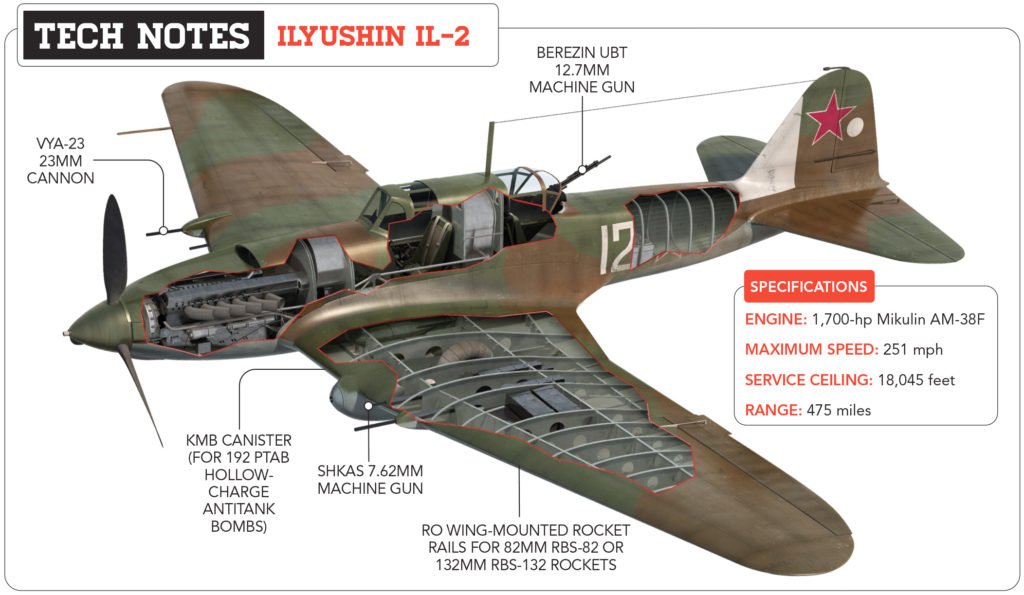
The Soviet combination of barely trained pilots with inferior aircraft led to the Luftwaffe’s triumph on July 5. For example, in the southern sector, Hauptmann Johannes Wiese of I Gruppe, Jagdgeschwader 52 (I./JG 52) flew five sorties and reported shooting down 12 Ilyushin Il-2 attack aircraft. Another indication of how overmatched the Soviet pilots were on the first day of battle is that the average altitude of combat was just 4,265 feet, as the Russians sought safety at low altitudes.
The real extent of Soviet aircraft losses on July 5 remained unknown because many Russian primary sources remain concealed by obsessive state secrecy, but the pilot losses have been counted here, for the first time. A total of 166 pilots died or went missing in action, 111 of them junior lieutenants, the lowest Soviet officer rank, and another 22 sergeants. Both ranks were received by graduates of flying schools at the end of their training. The tragedy of these young Soviet pilots was that their sacrifice meant little to the regime they served, because Stalin’s military could always find others to replace them.
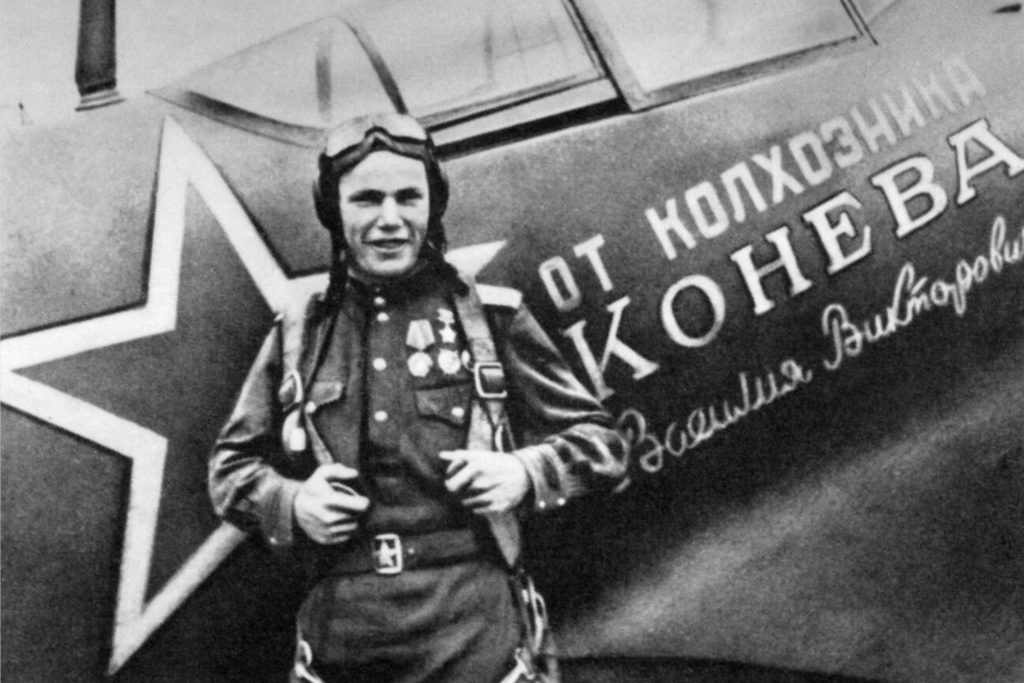
The Germans Paid a Bloody Price
For the Luftwaffe, the lopsided victories created an illusion that they had secured air superiority. In fact, the cost of German victory was too high. It is often written that the Germans lost only 26 aircraft, but this count includes only those reported that day. When all losses were tallied, German losses totaled 55 aircraft and 20 pilots. Those of the fighter force, which was already too small for its assigned task, included 23 aircraft and 12 pilots killed or missing.
Hans Grünberg, a German ace who flew on July 5, reported that his day began when he was urgently called back to his home airfield from an early morning scramble. The base was under attack from “light furniture vans,” the disparaging nickname German fighter pilots used for the Il-2. Grünberg claimed four of these. Yet, the Soviet air force had so many planes that they simply kept on coming. Later that day, the German ace watched as waves of Soviet aircraft “rolled over our tank and infantry advance columns.”
In direct support of the ground troops, the Luftwaffe’s efforts were also exceptional and insufficient. On July 5, German pilots flew 3,359 sorties to attack ground targets, 1,942 of them in the southern sector. With this support, SS divisions broke through two of the three Soviet main defense lines. Yet by the evening of the next day, the commander of the Fourth Panzer Army in the south, Generaloberst Hermann Hoth, asked the Luftwaffe to assign most forces to support the 48th Panzer Corps, fighting immediately to the west of the SS troops, because the army formation lacked sufficient help from the Luftwaffe and was advancing very slowly. Obviously, Germany’s air force was stretched too thin. From the start, it could help only some Panzer units while others had to manage with inadequate air support. This was true in the northern sector as well. On July 7, a German corps attacking from the north was already reporting “bomb attacks by strong enemy air formations” as a pillar of the Soviet defense.
July 7 was the day when the Luftwaffe admitted its strength was fading. Its aircraft were flying too many missions with not enough time for required maintenance. Fewer and fewer airplanes remained mission ready.
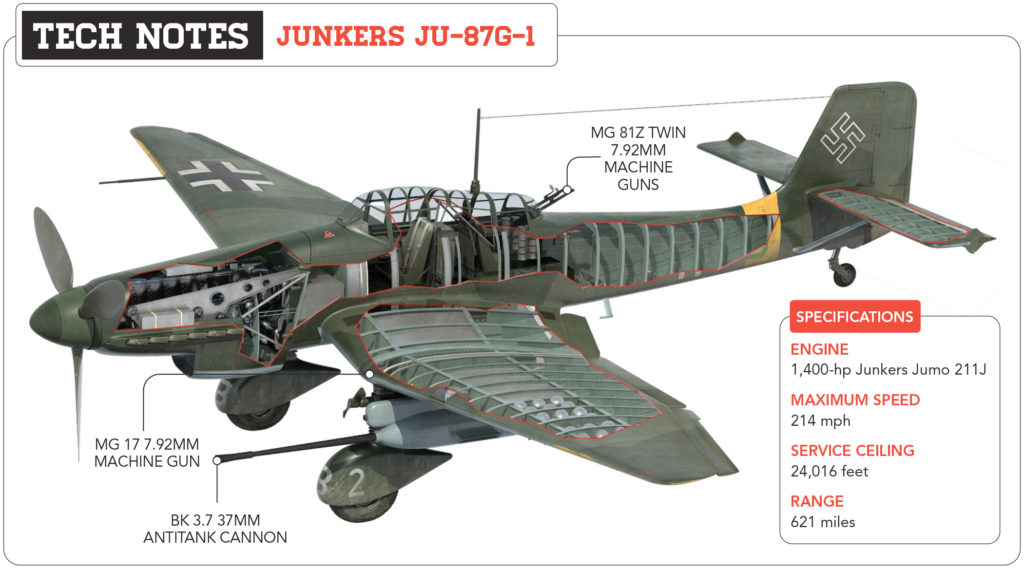
The Germans lacked tankbusters
In this gigantic tank battle, it did not help that the Luftwaffe had only a handful of tankbusters. By the end of June, German industry had managed to produce a mere eight Ju-87 and 16 Me-110 tankbusting aircraft, both with 37mm anti-tank guns. At Kursk, both types saw service only in the northern sector, with one exception. Hans-Ulrich Rudel, Germany’s best-known ground attack pilot, kept his personal Ju-87G and used it in the south. On the opening day of the battle, Rudel destroyed 12 Soviet tanks with his twin 37mm guns, often going in so low his Stuka was scorched by the explosions. But Rudel was an exception. In practice, the only militarily significant tankbuster was the armored Henschel Hs-129 with its 30mm gun. All four squadrons operated in the south, and it was only on July 8 that they made their first successful deployment. Of the total of 1,380 attack sorties flown in the area that day, Hs-129s flew only 53. The Germans reported destroying a total of 84 tanks by all the different aircraft types, “11 of these set on fire.” Even if that was not an exaggeration, it was just a minor break in the rising steel tide of Soviet armor.
GET HISTORY’S GREATEST TALES—RIGHT IN YOUR INBOX
Subscribe to our HistoryNet Now! newsletter for the best of the past, delivered every Monday and Thursday.
By July 9, on the fifth day of the offensive, the German army was already on the cusp of failure. In the north, there was talk was of a “temporary pause in the offensive,” while in the south General Hoth complained that “the operation has temporarily run out of steam.” The truth was not so ambiguous. The Luftwaffe, in particular, was exhausted. It could only manage 481 attack sorties in the north that day, a third of what it had achieved on July 5. In a sign of desperation, reconnaissance aircraft employed as improvised bombers flew 110 of these sorties. Individual pilots were exhausted and overwhelmed. As the future highest-scoring Soviet ace, Ivan Kozhedub, remembered it, Russian pilots routinely flew three or four sorties a day at the peak of the fighting, while the outnumbered Germans flew even more. A German bomber pilot, Oberleutnant Martin Vollmer, had a particularly bad time. Already suffering from a lack of sleep, he remembered that “idiotic flying in bad weather” made things even worse. On his third mission on July 8, Vollmer not only failed to find his target, he completely lost his bearings. He eventually received fire from a Soviet anti-aircraft battery and bombed it as a target of opportunity. He barely made it back to base.
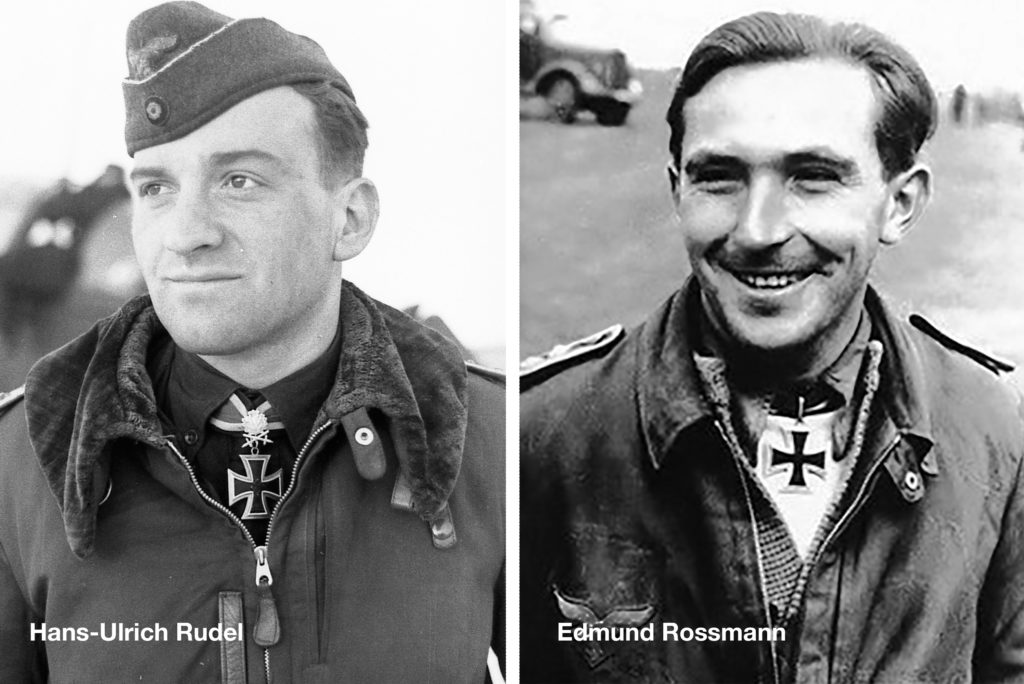
In the south, Unteroffizier Edmund Rossmann of III./JG.52, an ace with 93 victories, led a weather reconnaissance mission on July 9. In confused combat in heavy clouds, one pilot was shot down and the Me-109 of another, 25-victory ace Feldwebel Ernst Lohberg, was damaged. Lohberg made a forced landing and Rossmann touched down to rescue his wingman. The pilots thought they were 12 miles west of Oboyan, but they were in fact closer to 20 miles west and only a mile or so from a Soviet communications battalion. Soviet soldiers rushed out, shot Lohberg dead and knocked Rossmann out with a rifle butt. The Soviets captured both Messerschmitts. The Soviet air force was able to test Lohberg’s but Soviet ace Captain Ivan S. Kravtsov destroyed Rossmann’s, a new Me-109G-6 model, while attempting to take off. Rossmann was lucky to survive six years in Soviet camps.
Somewhere, additional forces had to be found to reinforce the exhausted Luftwaffe, but none could be spared from other fronts. Only a single unit resting in Germany, a bomber group flying long-obsolete Heinkel He-111s, could be spared, and only because it had already been planned to send it to the northern sector of the Eastern front. It was sent to the Oryol bulge instead.
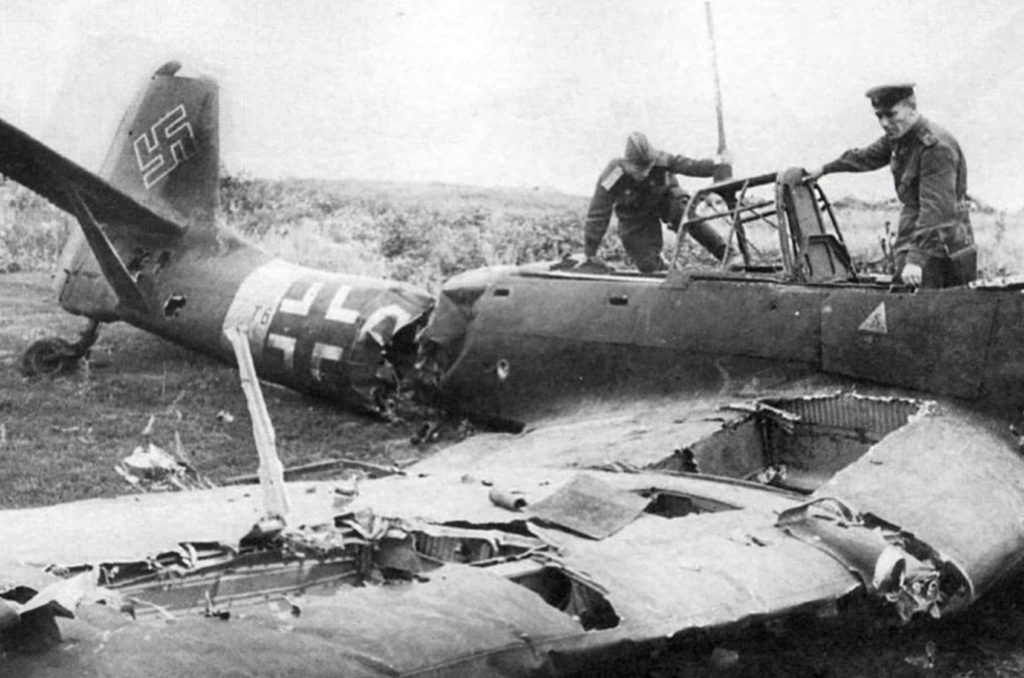
the Germans Admit defeat
This would not be enough, so a decision was made that essentially admitted that the German plan had collapsed. By July 10, all the Hs-129 tankbusters were ordered to the Oryol area, leaving Rudel as a one-man anti-tank air force in the southern sector. With no other reinforcements available, the Germans could reinforce only one of the two pincers of the Citadel plan, meaning victory was impossible. Clearly, German commanders did not wish to face this reality, so in practice the Hs-129 units were still flying in the south as late as July 12. They flew north two days later.
By then the Battle of Kursk had become irrelevant to German strategy. On July 10 the Allies landed in Sicily. Soviet Marshal Konstantin Rokossovsky, commanding the northern sector of the Kursk bulge, realized the implications. A message he sent to all his troops (which was intercepted and included in a German intelligence report) read, “The Allies have landed on the island of Sicily. The commander of the defense salutes you. Hold your positions, victory will be ours.”
Rokossovsky was correct. The Germans had no more reserves for their forces in the East. The full weight of Anglo-American military power now aimed at Germany and Italy. Stalin’s demands for a second front had been fully met almost a year before the Normandy landings, though the Soviet dictator would never acknowledge this. The battle for Kursk was over. The best that German forces could now hope for was to avoid a repeat of the Stalingrad disaster in the Oryol bulge to the north, where a Soviet counter-offensive was about to begin.
Dan Zamansky is a British-Israeli independent historian, educated at Oxford and King’s College London. Fluent in English and Russian and with a working knowledge of German, the focus of his research lies in re-evaluating contemporary history using newly available sources. He suggests for further reading: Thunder at Prokhorovka: A Combat History of Operation Citadel by David Schranck; and The Luftwaffe: A Complete History 1933-1945 by E. R. Hooton.
historynet magazines
Our 9 best-selling history titles feature in-depth storytelling and iconic imagery to engage and inform on the people, the wars, and the events that shaped America and the world.


